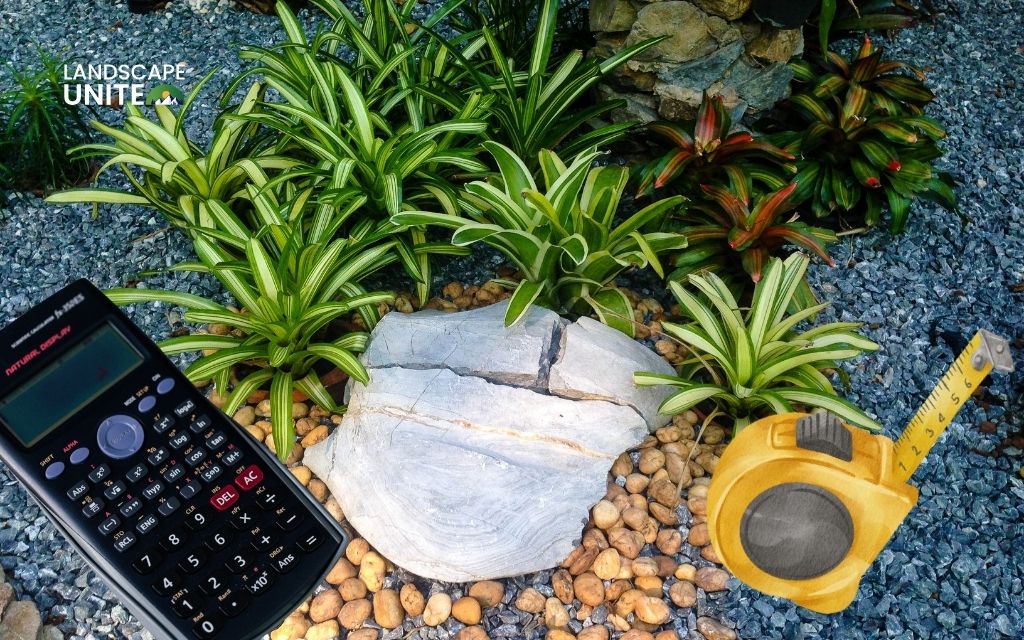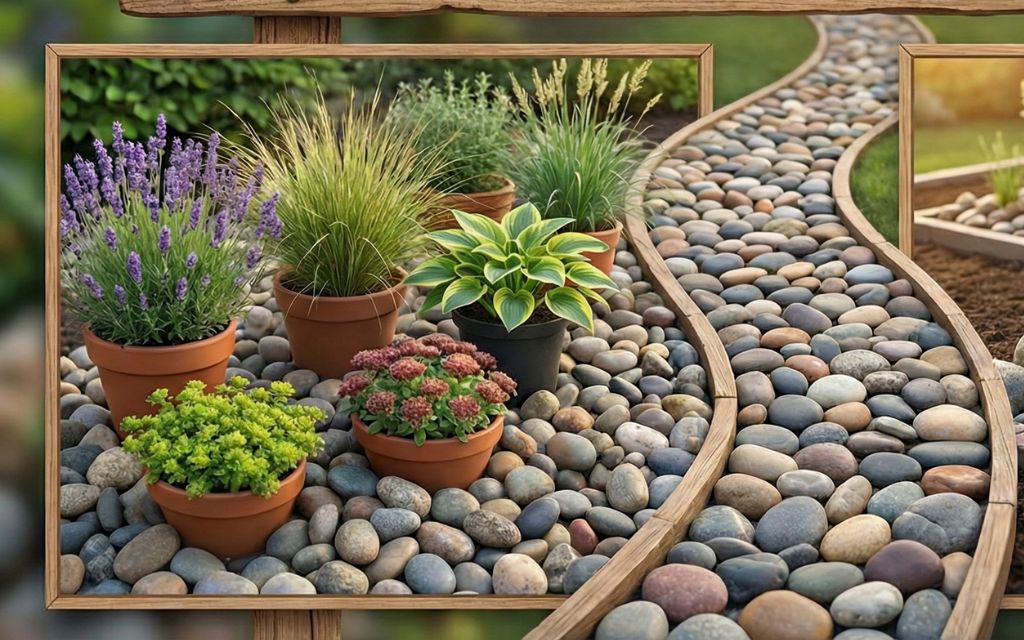Planning a flower bed installation for your garden? Understanding the costs involved is crucial for making informed decisions about your landscaping investment. Flower bed costs typically range from $1,100 to $3,175, with most homeowners spending around $2,370 for a professionally installed flower bed that includes both labor and materials.
Whether you’re dreaming of a simple border garden or an elaborate raised bed design, the total cost depends on several key factors including size, materials, labor requirements, and design complexity.
This comprehensive guide breaks down everything you need to know about flower bed installation costs to help you budget effectively and get the best value for your landscaping project.
Average flower bed installation costs
The cost of installing a flower bed varies significantly based on your approach and project scope. Here’s what you can expect to invest:
- DIY installation: For homeowners who prefer the hands-on approach, DIY flower bed projects typically cost between $100 and $500 for small to medium-sized beds. This budget covers essential materials like soil amendments, mulch, and plants, while your time and effort provide the labor component.
- Professional installation: Hiring landscaping professionals generally costs between $500 and $2,500, depending on the project’s size and complexity. This investment includes design consultation, site preparation, material procurement, and skilled installation by experienced landscapers.
- High-end custom projects: Elaborate flower beds featuring premium materials, intricate designs, and advanced landscaping elements can exceed $5,000. These luxury installations often include features like integrated irrigation systems, custom stonework, and designer plant selections.
The national average of $2,370 represents a balanced approach that combines quality materials with professional expertise, delivering lasting results that enhance your property’s curb appeal and value.
| Installation Type | Cost Range | What’s Included |
| DIY installation | $100 – $500 | Materials only (soil, mulch, plants, basic tools) |
| Professional installation | $500 – $2,500 | Design, labor, materials, site preparation |
| High-end custom projects | $5,000+ | Premium materials, complex designs, irrigation systems |
| National average | $2,370 | Professional installation with quality materials |
Factors that affect flower bed installation costs
Understanding the variables that influence flower bed costs helps you make strategic decisions about your landscaping budget.
Several key factors determine the final price of your project:
Size of the flower bed
The most significant cost driver is the bed’s dimensions. Larger installations require more materials, extended labor hours, and additional site preparation work.
A 50-square-foot bed costs less than a 200-square-foot installation due to economies of scale and material requirements.
Learn more: How to maximize your garden with potted plants in flower beds [+12 ideas]
Location and access
Your property’s characteristics impact installation costs. Steep slopes, rocky terrain, or areas with poor drainage require additional preparation work.
Remote locations or beds situated far from material access points may increase labor costs due to transportation challenges.
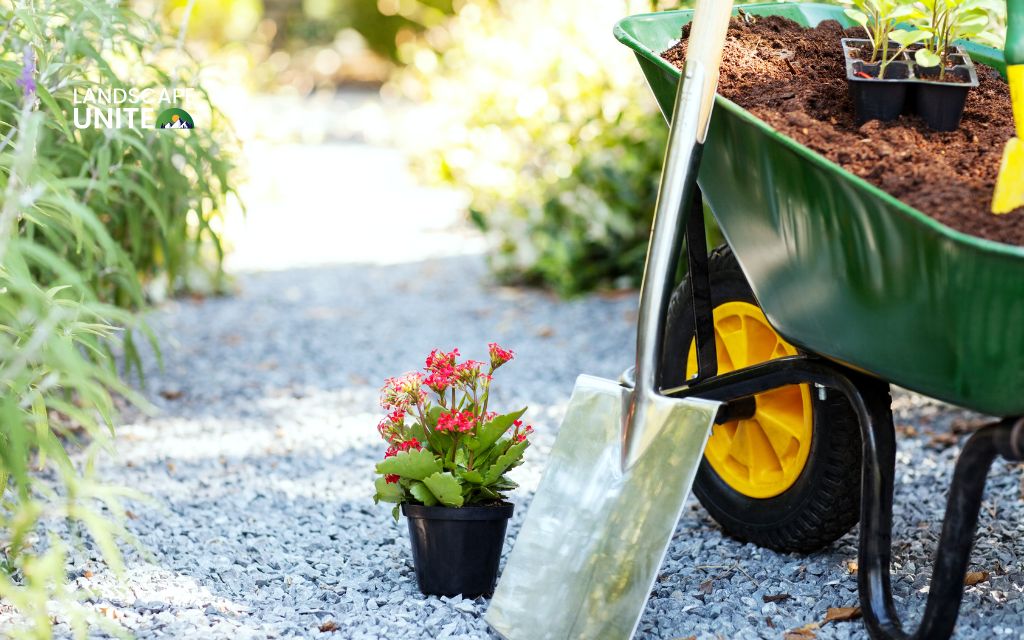
Materials selection
Your choice of soil amendments, mulch types, and plant varieties significantly affects the total investment. Premium organic compost costs more than standard soil amendments, while exotic plants command higher prices than common garden varieties.
Quality materials often provide better long-term value despite higher upfront costs.
Labor costs
Professional landscaping services vary by region and contractor expertise. Urban areas typically have higher labor rates than rural locations, while specialized landscapers with design credentials may charge premium fees for their services.
Labor costs also include both installation time and design consultation fees.
Design complexity
Simple rectangular beds cost less than elaborate curved designs with integrated features.
Complex installations requiring custom edging, pathways, or built-in irrigation systems demand additional design time, specialized materials, and skilled craftsmanship, all contributing to higher overall costs.
Types of flower beds and their installation costs
Different flower bed styles offer varying cost structures and design possibilities. Understanding these options helps you choose the approach that best fits your budget and garden goals.
In-ground flower beds
In-ground installations represent the most traditional and cost-effective approach to flower bed creation. These beds integrate seamlessly with your existing landscape while requiring minimal structural materials.
- Site preparation requirements: Successful in-ground beds require thorough site preparation including vegetation removal, soil testing, and ground leveling. Poor drainage areas may need amendment with sand or gravel, while compacted soil requires tilling and organic matter incorporation.
- Material needs and costs: Essential materials include quality topsoil, organic compost for soil improvement, and mulch for weed suppression and moisture retention. Premium soil amendments like aged manure or specialized potting mixtures increase material costs but provide superior growing conditions for your plants.
- Labor considerations: Installation involves soil excavation, amendment mixing, and proper bed shaping. Professional landscapers typically charge by the hour for this work, with rates varying based on soil conditions and access difficulty.
- Typical price range: In-ground flower beds generally cost $4 to $12 per square foot, making them an economical choice for homeowners seeking beautiful gardens without significant structural investments.
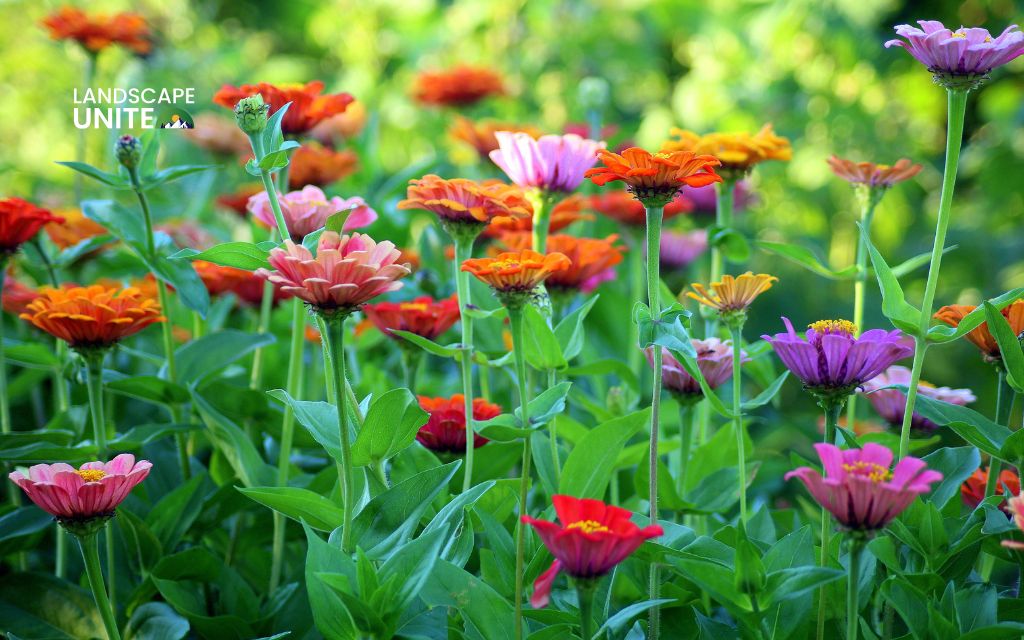
Raised garden beds
Raised beds offer superior drainage, soil control, and accessibility while creating distinct garden focal points. These installations require additional materials but provide excellent growing conditions and visual appeal.
- Material options: Construction materials range from pressure-treated lumber and composite boards to galvanized steel and natural stone. Cedar and redwood offer natural rot resistance but cost more than treated pine. Metal and composite materials provide longevity but require higher upfront investments.
- Height and accessibility factors: Standard raised beds measure 8 to 12 inches high, while accessibility-focused designs may reach 24 to 30 inches. Taller beds require more materials and structural support but offer easier maintenance for gardeners with mobility considerations. Built-in seating or wide caps add functionality but increase costs.
- Soil volume requirements: Raised beds need complete soil filling, significantly increasing material costs compared to in-ground installations. A 4×8-foot bed standing 12 inches high requires approximately 32 cubic feet of soil mixture, representing a substantial material investment.
- Average Costs: Raised garden beds typically cost $15 to $30 per square foot, reflecting the additional materials and construction requirements while providing superior growing conditions and garden aesthetics.
Specialty and custom installations
High-end flower bed installations offer unique design opportunities and premium materials but require significant investments.
- Tiered and terraced beds: Multi-level designs maximize planting space on slopes while creating visual interest through elevation changes. These installations require retaining wall construction, proper drainage systems, and careful soil grading.
- Built-in seating and features: Integrated seating areas, decorative walls, and architectural elements transform flower beds into outdoor living spaces. These features require additional materials, skilled craftsmanship, and often building permits, significantly increasing project costs.
- Custom shapes and designs: Curved beds, geometric patterns, and artistic layouts require precise planning and skilled installation. Complex shapes generate material waste and demand additional labor time for proper execution. Custom designs often need professional landscape architects for optimal results.
- Premium material options: High-end installations may feature natural stone edging, imported soils, rare plant varieties, and integrated lighting systems. These luxury materials create exceptional gardens but command premium prices reflecting their quality and exclusivity.
- Cost ranges for custom work: Specialty installations typically cost $30 to $65 per square foot, with elaborate projects potentially exceeding $100 per square foot when incorporating premium materials and complex features.
Regional cost variations across the US
Flower bed installation costs fluctuate significantly based on geographic location, local economic conditions, and regional preferences.
Understanding these variations helps you budget accurately for your specific area.
Northeast vs. south vs. west vs. midwest
Labor costs vary dramatically across regions, with Northeast and West Coast areas typically commanding higher prices due to increased living costs and wage levels.
Southern and Midwestern markets often offer more competitive pricing while maintaining quality standards.
Urban vs. suburban vs. rural pricing
Metropolitan areas generally have higher installation costs due to increased demand, higher operating expenses, and premium real estate values.
Suburban markets offer moderate pricing with good contractor availability, while rural areas may have limited service options but potentially lower labor rates.
Climate impact on material selection and costs
Regional climate conditions influence plant selections and material requirements. Desert climates may require specialized soil amendments and drought-resistant plants, while humid regions might need enhanced drainage solutions. These climate-specific requirements affect overall project costs.
How to save money on flower bed installation
Strategic planning and smart choices can significantly reduce flower bed installation costs without compromising quality or visual appeal. These proven strategies help maximize your landscaping budget.
Plan your flower bed size and layout
Starting with smaller installations allows you to learn techniques, assess maintenance requirements, and expand gradually. Smaller beds also cost less to install and maintain while still providing beautiful garden focal points.
Rectangular or simple curved designs require less labor and generate minimal material waste compared to complex geometric patterns. Straightforward layouts also prove easier to maintain and modify as your gardening skills develop.
Choose cost-effective plants
Local native species typically cost less than exotic varieties while requiring minimal water and maintenance. Native plants also support local ecosystems and wildlife while thriving in your region’s natural conditions.
While perennials may cost more initially, they return each year, eliminating annual replanting expenses. Strategic perennial selections provide long-term value and reduce ongoing garden maintenance costs.
Learn more:
- 15 gorgeous flowers for flower beds that bloom all season long
- 50 breathtaking red plants and flowers to make your garden pop
- 25 annual flower bed ideas that burst with nonstop color
- 15 must-plant fall flowers for a stunning autumn garden
Use mulch and organic materials
Quality mulch suppresses weeds, retains soil moisture, and reduces watering requirements. These benefits translate to long-term savings through reduced maintenance time and water usage.
Locally sourced mulch, compost, and organic materials often cost less than imported products while supporting local businesses. Municipal composting programs may offer quality amendments at reduced prices.
Read more about ways to mulch flower beds correctly in this guide.
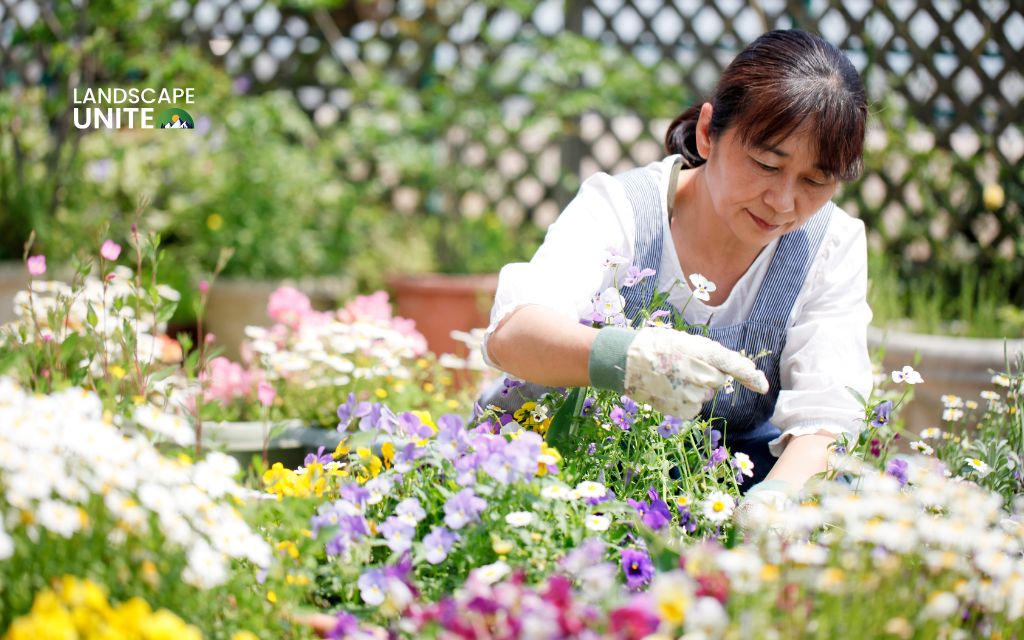
Conclusion
Creating beautiful, lasting flower beds requires balancing initial costs with long-term value and maintenance considerations. Smart planning ensures your investment provides years of garden enjoyment while enhancing your property’s value.
Ready to start your flower bed project? Plan your design, choose your plants, and get started today!
For more expert landscaping advice, and seasonal gardening tips, check out more of our garden care library to learn the best practices from professionals and experienced gardeners.
Frequently asked questions (FAQs)
How much does it cost to install a flower bed per square foot?
Flower bed installation costs range from $4 – $12 per square foot for in-ground beds, $15 – $30 for raised beds, and $30 – $65 for custom specialty installations. Total costs depend on materials, labor, and design complexity.
What is the cheapest way to install flower beds?
DIY in-ground installations using native plants and locally sourced materials represent the most economical approach, typically costing $100 – $500 for small to medium beds while providing excellent results with proper planning.
How much does it cost to install an irrigation system in a flower bed?
Basic drip irrigation systems cost $200-$500 for small beds, while professional installations with timers and zones range from $500 – $1,500 depending on coverage area and system complexity.
Can I install a flower bed myself? What tools will I need?
Yes, DIY installation is feasible with basic tools including shovels, garden trowels, wheelbarrows, and measuring tools. Success requires proper planning, soil preparation, and plant selection appropriate for your growing conditions.
What is the best way to maintain a flower bed?
Regular maintenance includes proper watering, seasonal mulch renewal, weed control, and plant pruning. Establishing good maintenance routines from installation ensures healthy plant growth and reduces long-term care costs.
